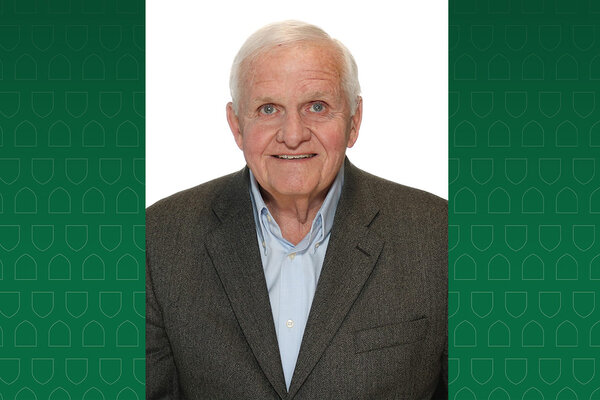
Taking space by storm
Kathryn McWilliams (BSc’94, MSc’97, PhD’01), an associate professor of physics and engineering physics, studies “space weather” that is responsible for phenomena such as the aurora
By: Scott Davidson
We often look up at our legendary living skies with wonder. We gaze at the vibrant colours of an early morning sunrise or a lingering prairie sunset. We are enchanted by the nighttime spectacle of the dancing aurora borealis—the northern lights. We know how to read the rolling clouds and respect the potentially destructive nature of a prairie storm. But we seem less wary, even unaware, of the potential harm that those captivating northern lights can cause.
Kathryn McWilliams (BSc’94, MSc’97, PhD’01), an associate professor of physics and engineering physics, and her team of researchers at the University of Saskatchewan’s Institute for Space and Atmospheric Studies (ISAS) monitor and study the “space weather” that is responsible for phenomena such as the aurora.
Space weather describes the movement of charged particles in Earth’s ionosphere, a region of the atmosphere above the stratosphere that is ionized by solar radiation. This movement, which is driven by the interaction between the solar wind and the Earth’s magnetic field, can directly affect communications, navigation and power systems on Earth.
Significant space weather activity can interfere with GPS navigation systems. Flight crews and frequent fliers on commercial aircraft are also exposed to the radiation of space weather—not at levels that would concern most travellers, though.
One of the most devastating examples of the effects of space weather is the 1989 Quebec blackout. In March of that year, a major geomagnetic storm allowed the aurora to be seen as far south as Florida and Cuba. It also caused Hydro Quebec’s power grid to completely collapse for nine hours. A combination of factors, including the design of the power grid itself and the rocky, Canadian Shield ground of Quebec, meant the system was particularly susceptible to the damaging effects of the powerful explosion, called a coronal mass ejection, that the sun unleashed days prior.
“Canada has the largest landmass under the auroral oval,” McWilliams said. “Along with our front row seat for space weather, Canada’s population is sparsely distributed over our vast area, meaning that we rely heavily on satellite communication and navigation and radio communication technologies that are vulnerable to space weather.”
ISAS—the only combined space and atmospheric research institute in Canada—is part of SuperDARN (Super Dual Auroral Radar Network), an international network of 35 high-frequency radar stations in 10 countries across the northern and southern hemispheres. SuperDARN creates up-to-the-minute maps of the weather in the ionosphere.
McWilliams is co-lead of the Canadian team headquartered at the U of S. Five radar stations located in Saskatoon; Prince George, BC; Inuvik, NT; Rankin Inlet, NU; and Clyde River, NU are responsible for mapping approximately five million square kilometres of the ionosphere.
The U of S joined SuperDARN in 1993 and is the only Canadian university to be part of the network. According to McWilliams, the U of S has a long history of studying Earth’s atmosphere. ISAS was founded as the Institute for Upper Atmospheric Research in 1956. The organization was formed to study weather, aurora and related phenomena in the upper atmosphere
Today, ISAS employs 40 people, including physics and engineering physics professors, research assistants, engineers, and 19 graduate students. McWilliams said the univerity’s extensive history in space science research, along with Saskatoon’s prime location under the auroral oval—the area of Earth where the effects of space weather are experienced most intensely—is what led ISAS to join SuperDARN.
“The long history of atmospheric and space science, along with the institute’s significant engineering activities and radar expertise has made the U of S an ideal headquarters for the Canadian component of SuperDARN,” McWilliams said.
Earlier this year, the team received $462,000 in funding from the Canadian Foundation for Innovation (CFI). “The funding that we received from the Major Science Initiatives program of the CFI is essential for SuperDARN to continue to operate in Canada,” McWilliams said. “Without it, we would have had to significantly scale back the research, potentially discontinuing operations at some of the more expensive Arctic sites. The network continues to grow, and the CFI funding is allowing the Canadian portion of SuperDARN to move forward.”
And we can enjoy the spectacle of the northern lights instead of worry about its effects on our critical communications network on which we so heavily rely.
This article originally appeared in the Spring 2015 issue of the Green & White


